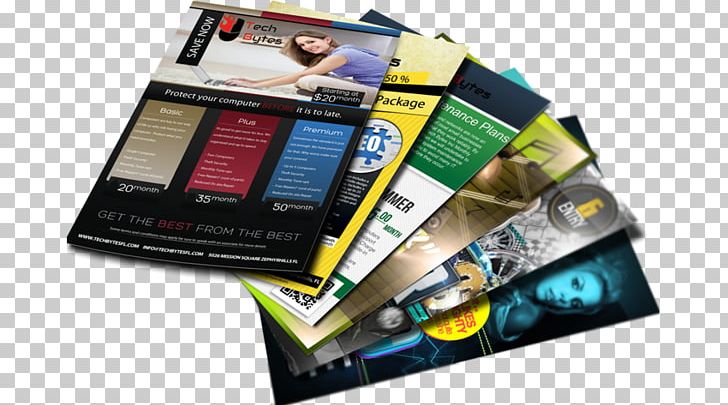
Traditional advertising agencies offer a variety of services to help companies reach their target audience. A traditional advertising agency can create and execute an ad campaign. It may also provide print and digital advertising materials. These agencies can be a valuable resource to businesses trying to reach their customers. The majority of agencies are located near major cities. However there are some that are local and specialize in media. In many cases, these firms can also work with mediums such as online social networks.
Although their results are often impressive, traditional marketing agencies are expensive. They are often unable to track the audience who sees ads on television or billboards, making it difficult for them prove the ROI of their campaigns. Alternative options include hiring a digital advertising agency that is skilled in all aspects. This type is best for brands that want to increase their internet traffic and presence.
The marketing process involves identifying the customer's needs, then finding the best way of meeting them. Market research is just one example of a variety that can be used for this purpose. Marketing agencies are efficient because they have teams that focus on strategy and execution. Their fees vary, but on average they charge between $2000 and $25,000 a month.

There are two types of traditional advertising agencies: in-house and standalone. A single client is the primary owner of an in-house agency. This type can work within an existing business, making communication much easier. A standalone agency could also be established. They make up a smaller percentage of overall market.
Traditional advertising agencies concentrate on the same types media as media network. A global network is the largest type of this type, with hundreds of offices in different parts of the globe. Global networks are a good choice because the marketing message can be consistently translated from one country to another.
Advertising agencies have traditionally been managed by large public corporations. The industry has seen significant change over the past few decades. Today, the industry is dominated by a small number of holding companies known as the "big five," which controls most of its agencies. In the 1980s, there were more agencies providing different services than ever before. The industry's overall structure is becoming more uniform.
Deloitte and Accenture are some of the most prominent names in modern marketing, along with PwC, WPP, PwC and PwC. Each agency is unique in its area of expertise, but all have the same responsibility: developing and executing largescale marketing strategies for their clients. Although all agencies can produce outstanding ads, each agency works in a different way.

Advertising agencies have become the middleman between businesses and the media. They have the responsibility for the planning and execution of marketing campaigns, as they also ensure the quality of these campaigns.
FAQ
What should you know about internet marketing?
Internet advertising is an important part of any business strategy today. It is a cost-effective way for companies to reach potential customers. There are many kinds of internet advertising. Some are free and some require payment.
There are several options for advertising on the internet. These include banner ads, pop-up advertisements, search engine optimization (SEO), PPC (pay-per-click) advertisements, social media and mobile marketing. Each method has its pros and cons.
How do I choose my target market?
Start with yourself, and the people closest to you. Ask yourself "Who am I trying reach?" if you aren't sure where to start.
Ask yourself these questions: Who are the most influential people in my industry? What are their daily problems? Which are the smartest people working in my field? Where can they be found online?
Go back to the beginning when you started your business. Why did you start? What problem were you able to solve and how did this happen?
These questions will enable you to identify your ideal client. They will also reveal their personality and reasons for buying from them.
To get clues about who they cater to, you can also check out your competitors' social media pages and websites.
Once you have identified the target customers, it is time to decide what channel(s) you want to use to reach them. If your company offers services to real estate agents you might make a website that targets home buyers.
If your company provides software to small businesses, you might consider creating a blog for those owners.
A Facebook page for teens could be set up if you are a clothing seller. Or if you're a restaurant owner, you could set up a Twitter account for parents looking for kid-friendly places to eat.
The important thing is that you have many options for getting your message across.
What is radio advertising?
Understanding the interactions between different media is essential. It is important to understand that all media forms are complementary and not competitive.
Radio is best used as an extension of television advertising. Radio complements television advertising by reinforcing key messages or providing additional information.
Radio listeners may find TV commercials too long. Radio ads are often shorter and cheaper.
What do you need information about print advertising
Print advertising is an effective medium for communicating with consumers. Many companies use print advertising to promote their products. The key objective is to capture the attention of the consumer.
Print ads are typically one page long and include text, images, logos and other graphics. These ads may include sound, animation and video as well as hyperlinks.
The following are the main types print advertisements:
1. Brochures: These large-format printed pieces are meant to draw customers into stores. Brochures can often be adorned with brightly colored images and eye-catching designs.
2. Catalogues- These are smaller versions and variants of brochures. These are typically sent to customers who ask for specific information.
3. Flyers - These small pieces of paper are distributed at events like fairs and concerts. These flyers are usually free, but they must be purchased if given to retail outlets.
4. Posters - These flyers can be larger than the ones you see on the flyer. They are often displayed on walls, fences, or buildings. They are typically created using computer software programs that aim to attract the attention of passersby.
5. Direct mail: These are postcards or letters that are sent directly by post to potential customers. These cards are sent by companies periodically to remind their customers about their company.
6. Newspaper Ads - These advertisements are found in newspapers and magazines. These are typically quite long and often contain text as well images.
Advertising is what?
Advertising is an art. It's not just about selling products. It's about making emotional connections between people, brands, and each other.
Advertising is about telling stories and using images to communicate ideas.
It is important to communicate clearly and persuasively. It is important to share a story that appeals to your target audience.
This makes advertising different from other forms of communication, such as public speaking, writing, or presentations.
By creating a successful campaign, you can create your brand identity.
And this is how you become memorable. You will be remembered by others.
What is the basic purpose of advertising?
Advertising is more about connecting with customers than just selling products.
Advertising is about communicating values and ideas to people who are interested in your products or services. It's about changing people's attitudes. It's all about building relationships.
It's all about making people feel good about themselves.
But, if you don’t have a clear understanding of your customers’ needs, you will not be able sell anything.
You must first get to know your customer before you can start advertising projects.
Then, you can create ads that resonate.
Is there any way to get free traffic?
The traffic that is free comes from organic search results and does not require you to pay for ads. This type of traffic is known as organic traffic or natural traffic. There are many options to get free traffic like article marketing and social media marketing.
Article Marketing is an excellent way to generate free traffic. Paying for ads is often more expensive than CPC. Content marketing is also known by the term article marketing.
Social Media Marketing – Social media platforms like Facebook, Twitter and LinkedIn let you promote your business via advertising. You can use these platforms to post updates, share photos and build relationships with people who may become potential customers. Many businesses opt to purchase ad space on social networks because they want to reach a larger audience for a more affordable price.
Blogging – Another way to generate traffic for free is to blog. Quality content that is enjoyable to read will attract people. After you attract visitors to your blog, you can make money by selling products or other services.
Email Marketing – Email marketing has been around ever since the dawn of the Internet. However, it remains one of your best methods to drive traffic to you website. Sending emails regularly is a good strategy to grow your list of subscribers and eventually sell them something.
Statistics
- Worldwide spending on advertising in 2015 amounted to an estimated US$529.43 billion. (en.wikipedia.org)
- Advertising's projected distribution for 2017 was 40.4% on TV, 33.3% on digital, 9% on newspapers, 6.9% on magazines, 5.8% outdoor, and 4.3% on radio. (en.wikipedia.org)
- In 1919 it was 2.5 percent of gross domestic product (GDP) in the US, and it averaged 2.2 percent of GDP between then and at least 2007, though it may have declined dramatically since the Great Recession. (en.wikipedia.org)
- This means that at least 50% of an ad needs to be shown on the screen for at least one second. (quicksprout.com)
External Links
How To
How do I advertise on Google?
AdWords can be used by businesses to advertise using keywords that they are interested in. The first step is setting up your account. The first step is to choose a campaign title, budget, ad type (text/image, video), and keywords. You then bid on these keywords. Clicking on an ad will pay you only if it is clicked by someone who searched using one of your targeted keywords. This ensures that you are paid even if people do not buy anything.
Google has many tools available to make sure your ads are effective. These tools include Ads Preferences Manager and Keyword Planner. These tools allow you see which options work best for your business.
A keyword planner helps you determine which keywords to use for your campaigns. It also shows you how much competition there is for certain keywords, helping you decide whether or not to spend money bidding on them.
Ads Preferences Manager can be used to adjust settings such as the maximum impressions per hour and the minimum price per click.
Analytics allows you monitor and compare the performance to your ads against other companies. You can also view reports showing how well your ads performed compared to others.